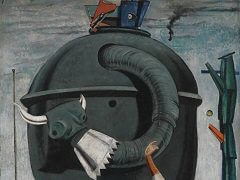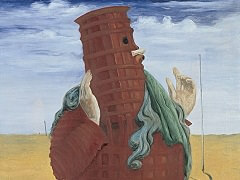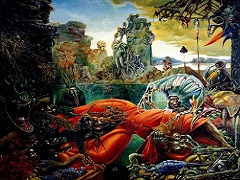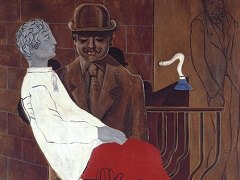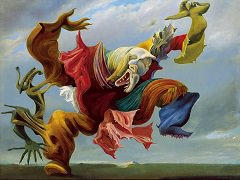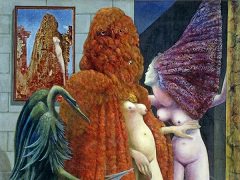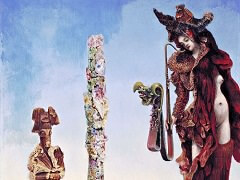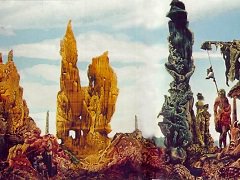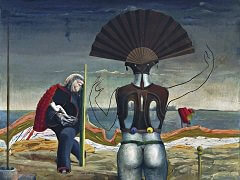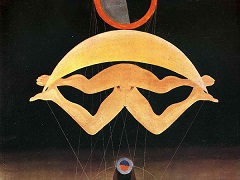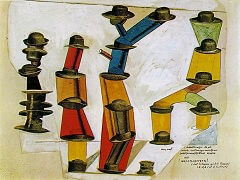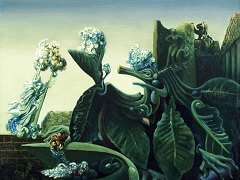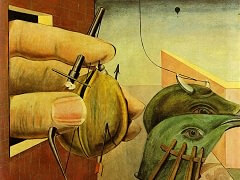The Antipope, 1941 - by Max Ernst
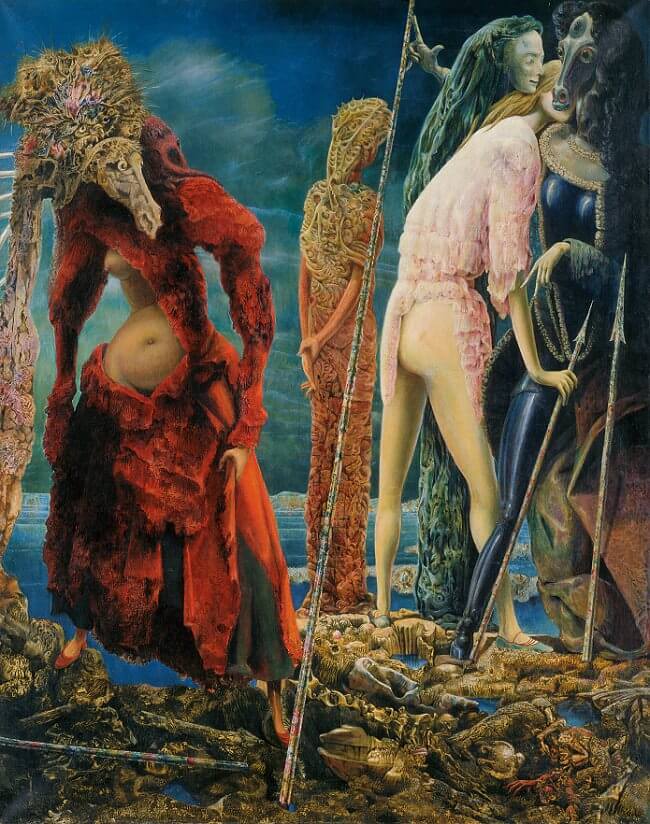
Max Ernst settled in New York in 1941 after escaping from Europe with the help of Peggy Guggenheim. The same year he executed a small oil on cardboard that became the basis for the large-scale The Antipope. When Guggenheim saw the small version, she interpreted a dainty horse-human figure on the right as Ernst, who was being fondled by a woman she identified as herself. She wrote that Ernst conceded that a third figure, depicted in a three-quarter rear view, was her daughter Pegeen; she did not attempt to identify another horse-headed female to the left. When Ernst undertook the large version from December to March he changed the body of the "Peggy" figure into a greenish column and transferred her amorous gesture to a new character, who wears a pink tunic and is depicted in a relatively naturalistic way. The "Pegeen" figure in the center appears to have two faces, one of a flayed horse that looks at the horse-woman at the left. The other, with only its cheek and jaw visible, gazes in the opposite direction, out over the grim lagoon, like a pensive subject conceived by Caspar David Friedrich.
The great upheavals in Ernst's personal life during this period encourage such a biographical interpretation. Despite his marriage to Guggenheim, he was deeply involved with Leonora Carrington at this time, and spent hours riding horses with her. As birds were an obsession for Ernst, so horses were for Carrington. Her identification with them is suggested throughout her collection of stories La Dame ovale, published in 1939 with seven illustrations by Ernst, two of which include metamorphosed horse creatures. It seems plausible that the alienated horse-woman of The Antipope, who twists furtively to watch the other horse-figure, represents a vision of Guggenheim. Like the triumphal bride in Attirement of the Bride, she wears an owl headgear. Her irreconcilable separation from her companion is expressed graphically by the device of the diagonally positioned spear that bisects the canvas. The features of the green totemic figure resemble those of Carrington, whose relationship with Ernst was to end soon after the painting was completed, when she moved to Mexico with her husband.

